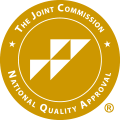Pacific Grove Hospital is a nationally recognized 68-bed acute psychiatric and chemical dependency treatment center offering inpatient & outpatient services for psychiatric illnesses, addictions & co-occurring disorders.
Understanding Alcohol Addiction
Learn about alcohol and substance abuse
While the terms alcoholism and alcohol abuse are often used interchangeably, these two phrases have quite distinct meanings. Alcohol abuse is a chronic, debilitating disease in which a person is unable to stop his or her alcohol consumption despite the negative effects on his or her work, interpersonal life, education, or health. Alcohol abuse tends to begin in a person’s mid-teens and early twenties. Alcoholism, the more severe of the two disorders, is an extremely detrimental pattern of alcohol consumption that includes a physical tolerance to alcohol and withdrawal symptoms if alcohol use is cut back or stopped altogether. Additional symptoms of alcoholism include drinking more alcohol for a longer period than intended as well as challenges cutting back or quitting altogether.
People who abuse alcohol or who are alcoholics are not drinking because they lack control; they can’t easily just “cut back” on their drinking. While alcohol use began as a choice, addiction is a disease, not a choice. Many people who struggle with alcoholism are simultaneously grappling with a mental illness such as schizophrenia, depression, or bipolar disorder. With the right types of inpatient detox, treatment, medication, therapies, and long-term support, most who struggle with alcoholism are able to successfully overcome their addiction and begin to lead a happy, healthy, sober life.
Statistics
Alcohol addiction statistics
Alcohol abuse and alcoholism affects about 10% of women and 20% of men in the United States, most of whom will begin using alcohol by their teen years. Approximately 15 million people are affected by alcoholism or alcohol abuse. The mortality associated with alcohol use and alcoholism is astounding: nearly 2,000 teens under the age of 21 die each year as a result of alcohol use. In 2011, the number of alcohol-induced deaths (excluding homicide and accidents) was nearly 26,000 individuals. That very same year, nearly 16,000 people died as a result of alcohol-induced liver disease.
Causes and Risk Factors
Causes and risk factors for alcohol addiction
Addiction is not caused by a single source; rather it is the result of several entwined causes and risk factors triggered by a precipitating event to create addiction. Some of the most common causes and risk factors related to alcoholism include:
Genetic: Individuals who have relatives, especially first-degree relatives, who struggle with addiction are at a far higher risk for developing an addiction than those without a similar family history. However, not all who end up addicted to drugs or alcohol have a family history of addiction. Likewise, not all with a family history of addiction develop the disease.
Physical: The process of becoming addicted to and dependent upon alcohol is slow. Over time and with chronic consumption, alcohol changes the naturally-occurring balance of chemicals and nerve pathways in the brain responsible for pleasurable sensations, exercising good judgment, and the ability to exert control over behavior. This creates physical dependence and addiction to alcohol.
Environmental: People raised to believe that addiction is the proper way to handle life events are more apt to develop difficulty with addiction later in life. Additionally, those who begin drinking at an early age are at higher risk for developing addiction to drugs or alcohol at a later age.
Risk Factors:
- Having a partner or close friend who drinks regularly or is an alcoholic increases the risk for developing alcoholism
- Depression and other mental health disorders can increase a person’s risk for alcohol abuse
- Steady drinking over time on a regular basis can produce a physical dependence upon alcohol
Signs and Symptoms
Signs and symptoms of alcohol addiction
The symptoms of alcoholism and alcohol abuse vary vastly from person to person based upon genetic makeup, individual temperament, amount of alcohol consumed, frequency of use, and presence of other drugs. The most common symptoms of alcohol abuse and alcoholism include:
Behavioral symptoms:
- Drinking alone
- Inability to limit the amount of alcohol consumed
- Cravings for alcohol
- Forgetting conversations and commitments
- Heavily ritualized drinking
- Reduced pleasure in previously-enjoyed activities
- Acting very passively
- Consuming alcohol with the express purpose of becoming intoxicated
- Stashing alcohol in a number of places around the house
- Irritation and agitation when unable to procure alcohol
- Legal problems
- Inability to fulfill obligations at home, work, school, or with friends
- Intense preoccupation with obtaining alcohol, consuming alcohol, and recovering from the negative effects of alcohol
- Violent, aggressive behaviors
- Increase in risk-taking behaviors while intoxicated – such as driving while drunk
- Heightened libido coupled with impotence
Physical symptoms:
- Alcohol smell on breath or skin
- Physical withdrawal symptoms when alcohol use is abruptly stopped or drastically reduced
- Flushed skin
- Red, bloodshot eyes
- Deterioration in physical appearance
- Poor hygiene
- Impaired coordination
- Damage to all organ systems
- Decreased immune functioning; increased infections
Cognitive symptoms:
- Decreased attention span
- Memory loss
- Challenges with cogitation
Psychosocial symptoms:
- Low self-esteem
- Depression
- Anxiety
- Hallucinations
- Delusions
- Psychosis
- Agitation
- Irritability
- Pleasure while drinking
- Emotional labiality
Effects
Effects of alcohol addiction
Alcohol damages every part of an addict’s life. The long-term effects of alcohol abuse and alcoholism differ depending upon the amount consumed, length of alcohol addiction, presence of other drugs or alcohol, and the frequency of consumption. The most common effects of alcohol abuse and alcoholism include:
- Decreased coordination
- Job loss, academic failure
- Consequences of risky behaviors
- Car accidents
- Legal problems
- Increased violent crimes
- Domestic abuse
- Child abuse
- Divorce
- Incarceration
- Hypertension
- Cardiac arrhythmias
- Cardiomegaly
- Nystagmus
- Increased risks for cancer
- Weakened immune system
- Impotence
- Irregular menses
- Thymine deficiencies
- Dementia and confusion
- Bone loss
- Stroke
- Amnesia
- Cirrhosis of the liver
- Alcoholic hepatitis
- Acute pancreatitis
- Suicide
- Coma
- Death
Overdose and Withdrawal
Effects of alcohol overdose and withdrawal
Withdrawing from chronic alcohol abuse can be very dangerous. Withdrawal from alcohol should always be done under the careful watch of trained medical personnel to prevent complications as symptoms of alcohol withdrawal can rapidly change from annoying to life-threatening. Symptoms of alcohol withdrawal tend to begin within 12 to 24 hours following the last drink and include:
- Mild anxiety
- Irritability
- Nausea and vomiting
- Headache
- Insomnia
- Sweating
- Shaking
- Confusion
- Hallucinations
- Seizures
- Delirium tremens (DT’s) – a life-threatening condition characterized by confusion, tachycardia, and high fever. The DT’s lead to death in approximately 1 to 5% of affected individuals
Symptoms of alcohol overdose, or alcohol poisoning, can quickly lead to serious and deadly consequences if not promptly treated – call 911 immediately if alcohol poisoning is suspected. Common symptoms of alcohol poisoning include:
- Confusion
- Difficulty maintaining consciousness
- Vomiting
- Seizures
- Trouble breathing
- Dangerously reduced heart rate
- Clammy skin
- Dulled reflexes
- No gag reflex
- Hyperthermia
- Coma
- Death
Co-Occurring Disorders
Alcohol addiction and co-occurring disorders
Alcoholism and alcohol abuse rarely occur in the absence of other, co-occurring mental health disorders. The most common co-occurring, comorbid mental health disorders include:
- Substance abuse
- Anxiety disorders
- Post-traumatic stress disorder
- Schizophrenia
- Bipolar disorder












